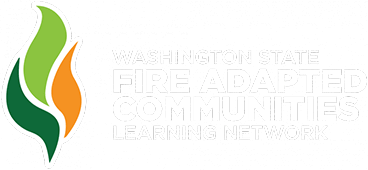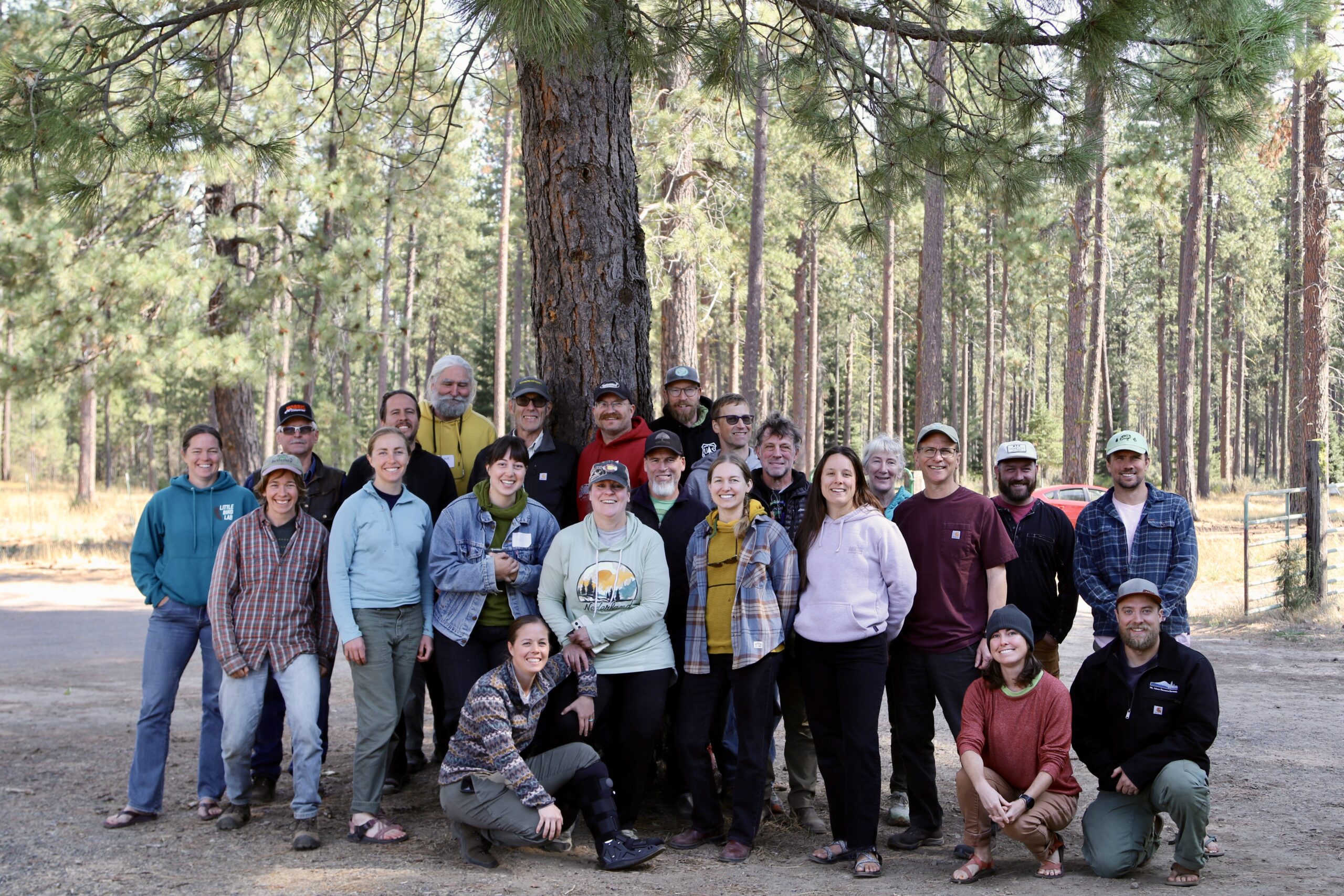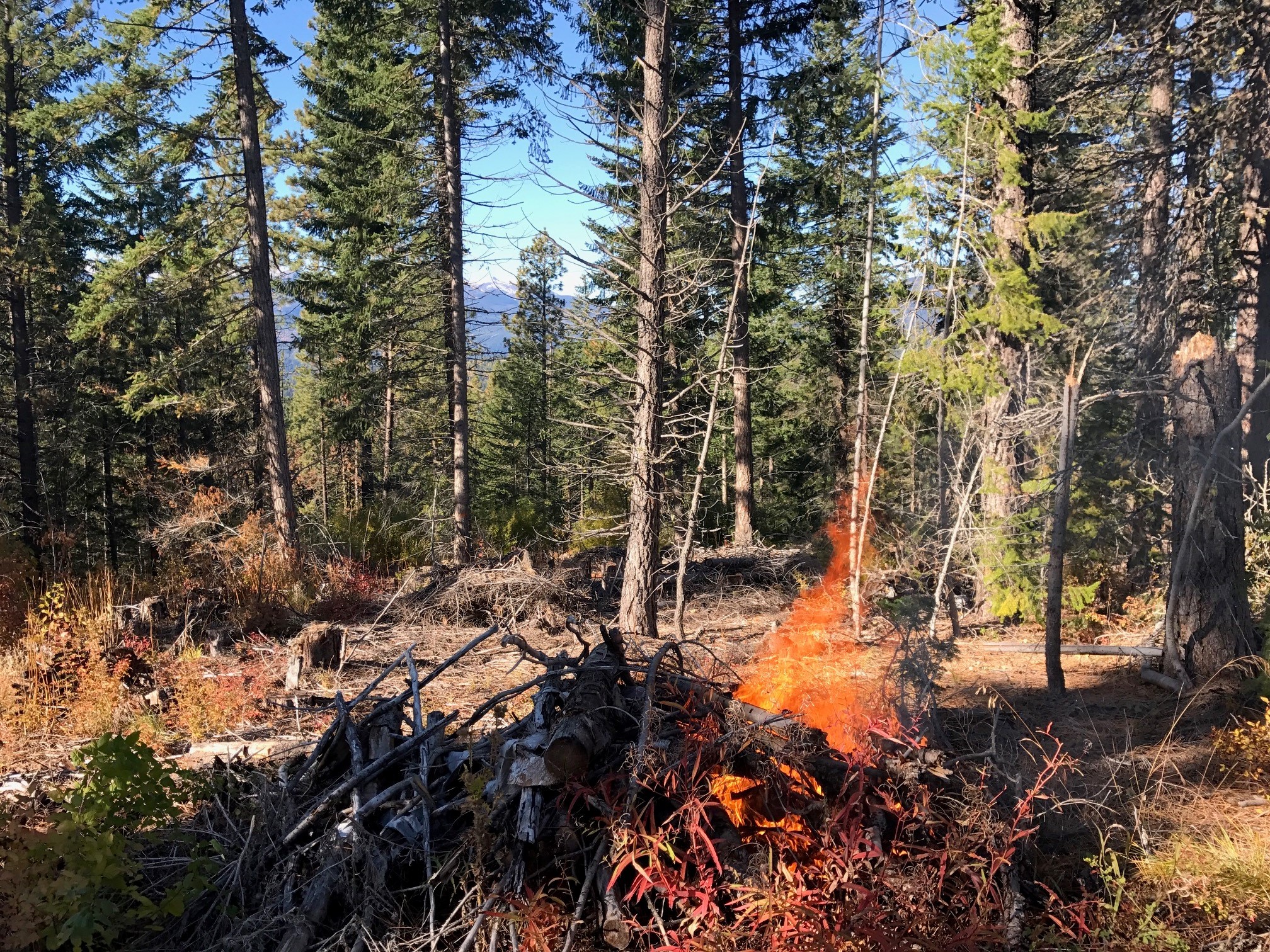A few years ago, several motivated community members and prescribed fire practitioners from Washington and Oregon attended a Learning Exchange in California to learn about community-led cooperative burning. What resulted was the spark of a grassroots movement that has spread throughout the Pacific Northwest.
Inspiring Radical Change
Fire has always existed as a part of the landscape in the West, and has been used for millenia by the Indigenous peoples of our region. However, over a century of suppression policy, and the vilification of fire as a land management and cultural practice, has disconnected us from its use and benefit. Prescribed fire is not only a key tool in reducing fire risk in the wildland-urban interface (WUI), but also vital in restoring healthy ecologies in much of the Northwest. Many of those who work and live on the land know this, yet, prescribed fire training and certifications are relatively inaccessible due to their enmeshment with federal and state agencies and National Wildfire Coordinating Group (NWCG) certification standards. Prescribed Burn Associations (PBAs) on the other hand, aim to make beneficial fire an approachable technique for non-agency practitioners and private landowners.
PBAs are community-based groups of landowners and other interested individuals who collaborate to conduct prescribed burns on private lands. While relatively new to the Northwest, these collectives have existed throughout the U.S. for decades. Initially conceptualized in the 1990s in the Great Plains, PBAs spread through the Southeast and reached California in 2017, in part due to the inaugural PBA exchange hosted by the Fire Learning Network (FLN). Today, about 150 PBAs operate across the country. After the FLN-hosted California PBA Learning Exchange in 2023, interest in PBAs throughout the Northwest continued to grow, with twelve officially formed in Washington and Oregon as of this year.
“PBAs help spread the word about how important it is to get fire on the ground. People need to know that fire isn’t the problem, overloaded fuels are the problem.”
Learning exchange participants look over a tract of treated forest in Glenwood, WA.
Photo: Amelia Wells, WRCD.
To support these PBAs and encourage the formation of others, the Washington Resource Conservation and Development Council (WRCD), Oregon State University (OSU) Extension Fire Program, and Mt. Adams Resource Stewards (MARS) brought together 27 people for the first ever Pacific Northwest (PNW) PBA Learning Exchange in Glenwood, WA, nestled at the base of Mt. Adams in Klickitat County. Individuals from Washington, Oregon, and Colorado came together to share knowledge, experiences, and challenges, each eager attendee an embodiment of the collective nature of PBAs themselves.
Some participants are members or leaders of active PBAs, while others have yet to formalize an organizational structure, or are just beginning to explore a PBA for their community. The objective of the learning exchange was to provide experiential, peer-driven guidance, advice, and support, regardless of how far anyone was in the process of developing a functioning PBA.
Attendees joined from 14 different communities across Washington, Oregon, and Colorado, representing nine different PBAs. Graphic: WRCD.
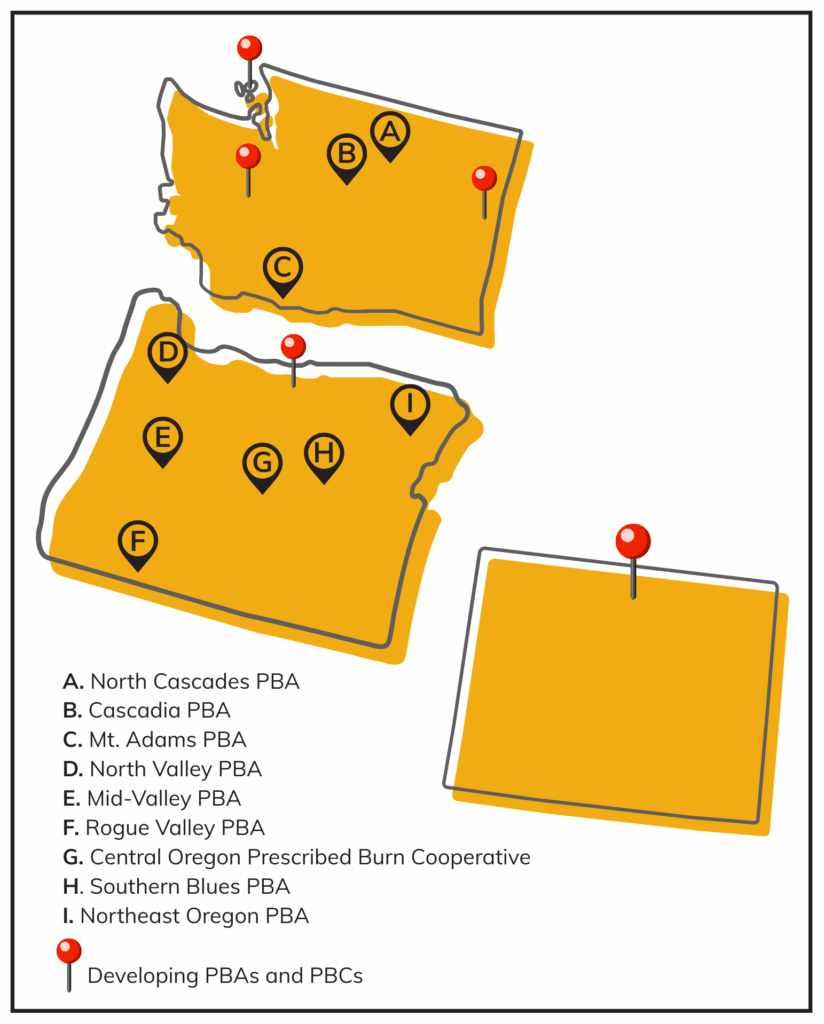
Those who joined from Colorado, where there are more barriers to burning on private lands, are instead organizing Burn Cooperatives (PBCs). PBCs, based on the PBA model, create networks of landowners that help each other build and burn slash piles to improve forest health and mitigate wildfire risk. Organizers also hope that PBCs can help build the enabling conditions for broadcast burning on private lands, and eventually PBAs.
Learn more about Pile Burn Cooperatives in Colorado, where the Ember Alliance is providing resources and workshops for interested landowners.
Experience with fire varied just as much as PBA status, with some having only just begun their relationship with burning and others who have made a career out of it. The beauty of community-led cooperative burning structures like PBAs is that there is room for all levels of expertise, regardless of fire experience. Colin Sternagel, a landscape restoration contractor and private landowner in Leavenworth, WA, had zero background in fire when he decided to enter the world of prescribed fire. After reading about Indigenous burning techniques and deepening his understanding of the importance of fire to his local ecosystems, Colin opted to begin using fire as a land stewardship tool. Now, he runs the Cascadia PBA, inviting others to join him in discovering the power of good fire. Colin’s tactic has been to “follow the stoke”, something he heard a participant say at the 2023 California Learning Exchange. In other words, not everyone is going to be excited about prescribed fire, but many are. Those are the people to seek out and engage.
“If I were to start over again, I would spend less time casting a wide net and focus on the people who are actually showing up”
Colin Sterneagal, Cascadia PBA (Leavenworth, WA)
“You can’t invest in people who aren’t going to invest back in the PBA”
Micah Schmidt, OSU Extension Fire Program
When not out in the field, participants held many fruitful conversations and connected with others on their same journey. Photo: Amelia Wells, WRCD
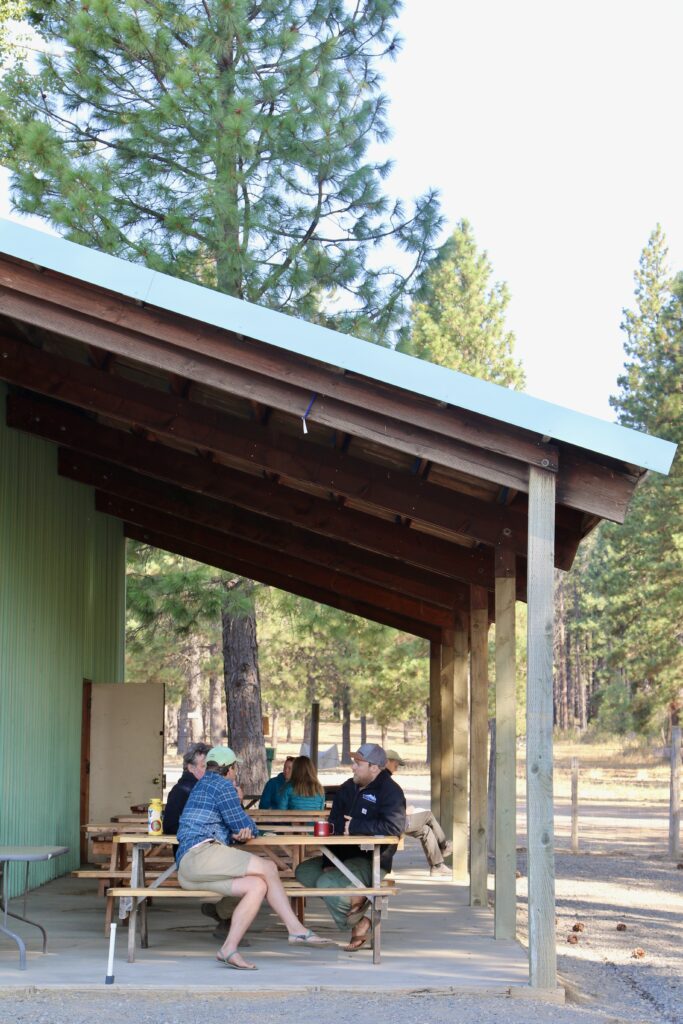
However, sometimes, those that are hesitant simply need to experience a burn for themselves. Another common sentiment shared amongst Learning Exchange attendees was, “just start burning”. People will show up, and oftentimes, merely watching one burn will change the minds of skeptics. Kylie England, Prescribed Fire Operations Specialist of Mt. Adams Resource Stewards (MARS), and Mt. Adams PBA member, spoke of “radical changes” in participant outlooks on prescribed fire after attending just one PBA burn event. The moment people see fire on the ground, and understand that, although risky, it’s a manageable, safe practice with tangible benefits to the land, their mindset shifts.
Getting Good Fire on the Ground
While successes were celebrated, much of the discussions over the course of the three day event focused on problem-solving and troubleshooting. Establishing a volunteer, member-led collaborative is no easy task, especially when aiming to implement a practice the general public tends to view as inherently risky. The unique grassroots nature of PBAs can make maintaining consistent membership and attendance challenging. One person cannot create buy-in out of thin air; it takes significant time and commitment on behalf of invested PBA leaders. Yet, for every challenge that was broached, at least two creative solutions were provided in response. Each participant was eager to jump at any opportunity to help others learn from their experience or offer to share resources and ideas ranging from recommended radio frequencies and community-centric event ideas to equipment management policies and good business practices.
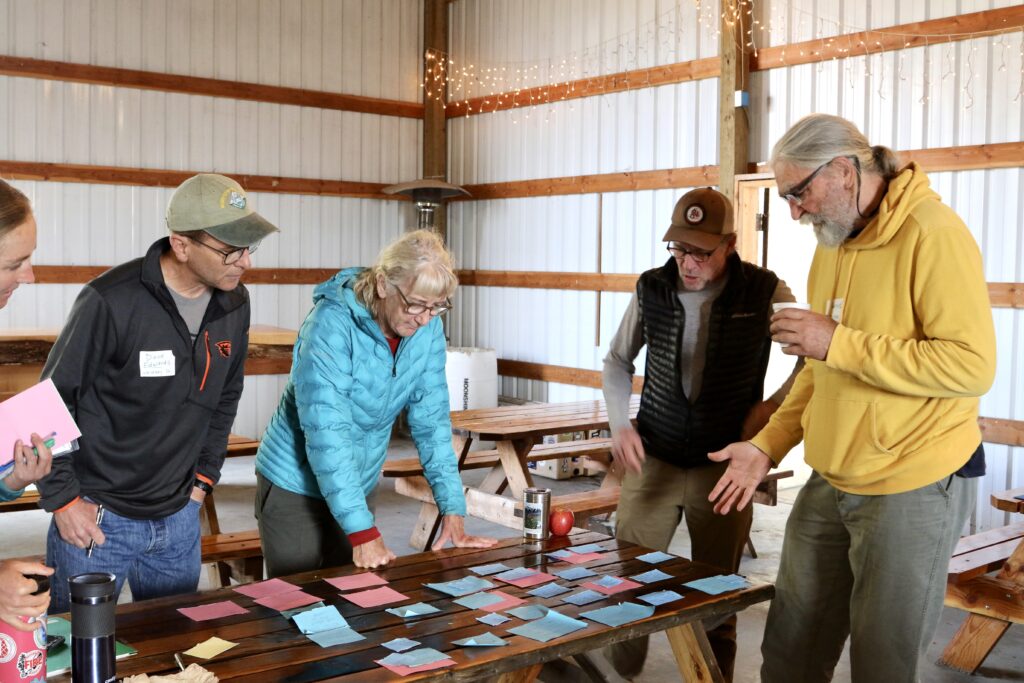
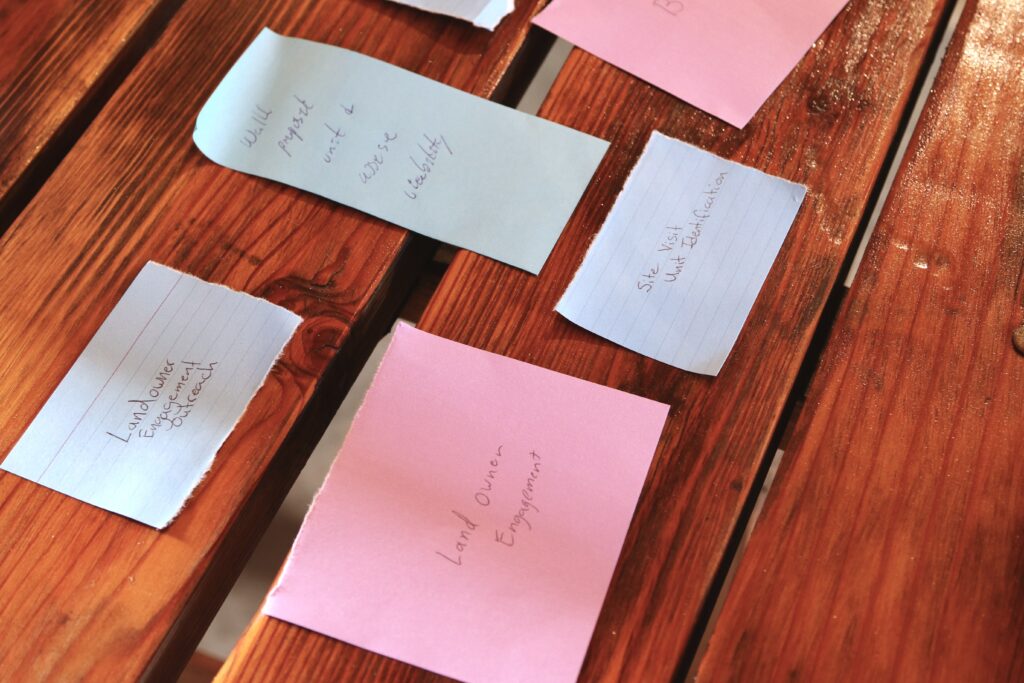
The “Zero to Burn” activity had groups map out exactly what it takes to successfully execute a PBA prescribed burn from start to finish. Turns out, it takes a lot. Notecards covered large picnic tables, forming a timeline of events and considerations, including everything from initial outreach to weather windows to the traditional post-burn barbeque. Photos: Amelia Wells, WRCD
Early on day two of the Learning Exchange, before the day’s heat, the group stood between the two yellow shipping containers that house Mt. Adams PBA’s equipment cache, coffees in hand. Lucas King, Fire and Fuels Program Manager at MARS, provided insight into how the PBA acquired materials, a tricky task for many under-resourced PBAs. Just hours later, sitting in the shade of ponderosas next to a verdant vegetable garden, participants heard directly from Nate and Betsy Putnam, who have done several burns on their property in Glenwood as members of the Mt. Adams PBA. It’s undoubtedly impactful to see firsthand how good fire can change the land. The Putnams led the group on a walk through old burns on their property, pointing out the stark difference between treated and un-treated parcels. Where bitterbrush had once completely taken over the understory, prescribed burns have effectively eliminated it, making way for a greater diversity of flora, including newly flowering rabbit brush.
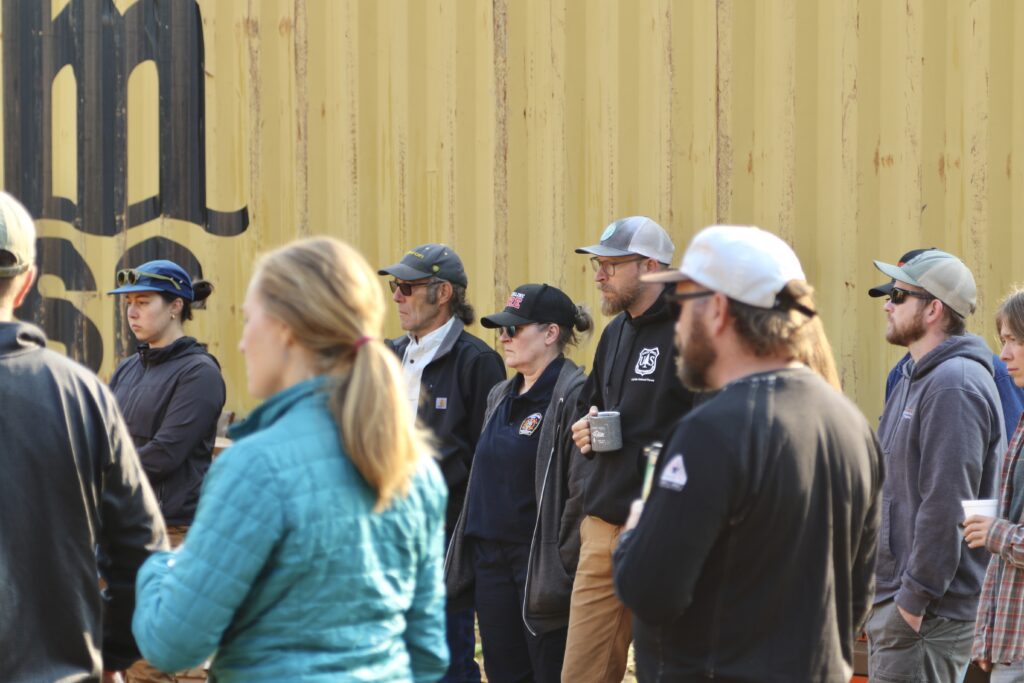
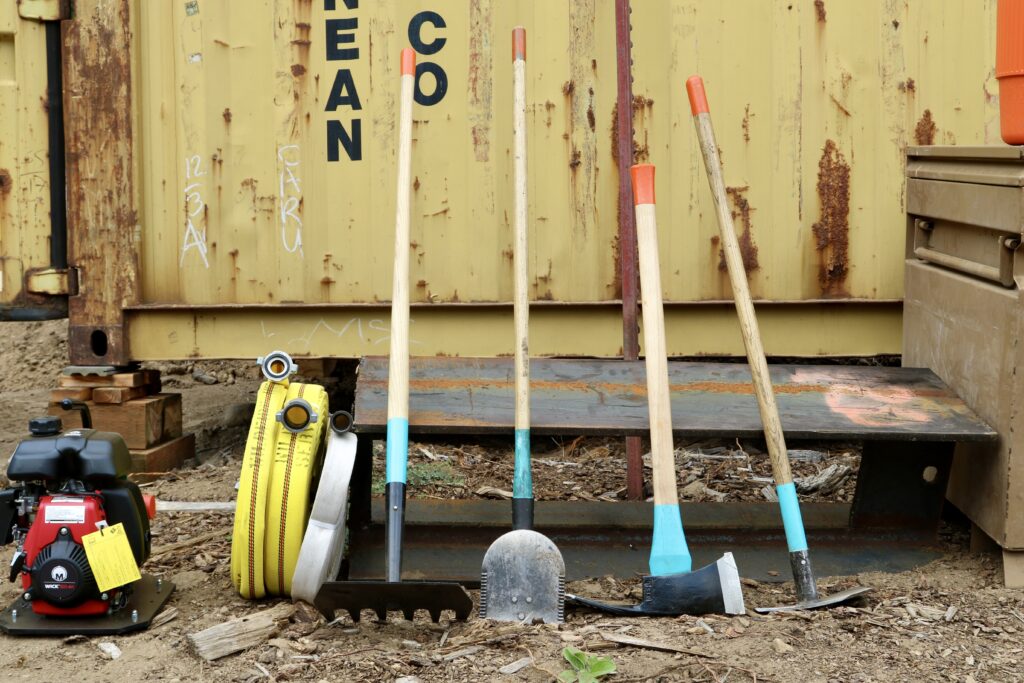
At the shared MARS and Mt. Adams PBA equipment cache, the group talked all things logistics. Executing a prescribed burn takes significant amount of planning, organization, and materials, which can sometimes be hard to come by. Photos: Amelia Wells, WRCD
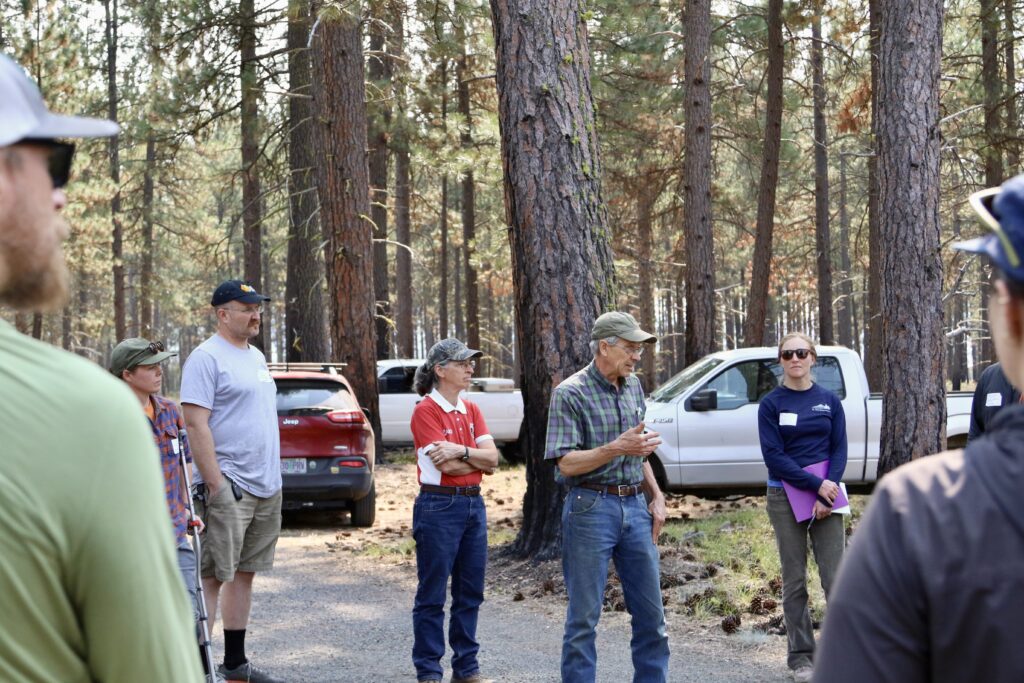
The field day ended in a circle under the canopy of the Mt. Adams Community Forest, some folks perched on logs, others settled in camp chairs. Light filtered through the trees – the shade a brief reprieve from the warm summer afternoon – as attendees brainstormed next steps. The big question being, how do we keep this momentum going? No one was short on ideas, including: shared burn calendars, PBA-oriented training pathways, a PNW prescribed fire guidebook, quarterly PNW PBA calls, and another Learning Exchange next year.
Placing Relationships First
The PBA movement represents the reclamation of a tool that has been actively villainized throughout the past century of Western fire suppression culture. PBAs are operating, for the most part, outside of that restrictive system. They are placing relationships first, relationships with fire, the land, and between neighbors.
“[PBAs are] not just about getting acres done, [they’re] about creating community and changing culture.”
Chris Adlam, OSU Extension Fire Program and Rogue Valley PBA Member
It can sometimes be a lonely endeavor, often spearheaded by one or two motivated community members or landowners. It’s common to face pushback from agencies and sometimes neighbors. The Learning Exchange sought to alleviate these challenges by providing tips for building a grassroots movement of community-led cooperative burning. More importantly, it helped build connections with others pursuing this vision and strengthened the PBA network across the Pacific Northwest.
“We’re the movers and shakers in our communities but we can’t do it by ourselves. We’re going to need to reach out to others for this to be successful"
Bill Newman, landowner in John Day Valley, OR
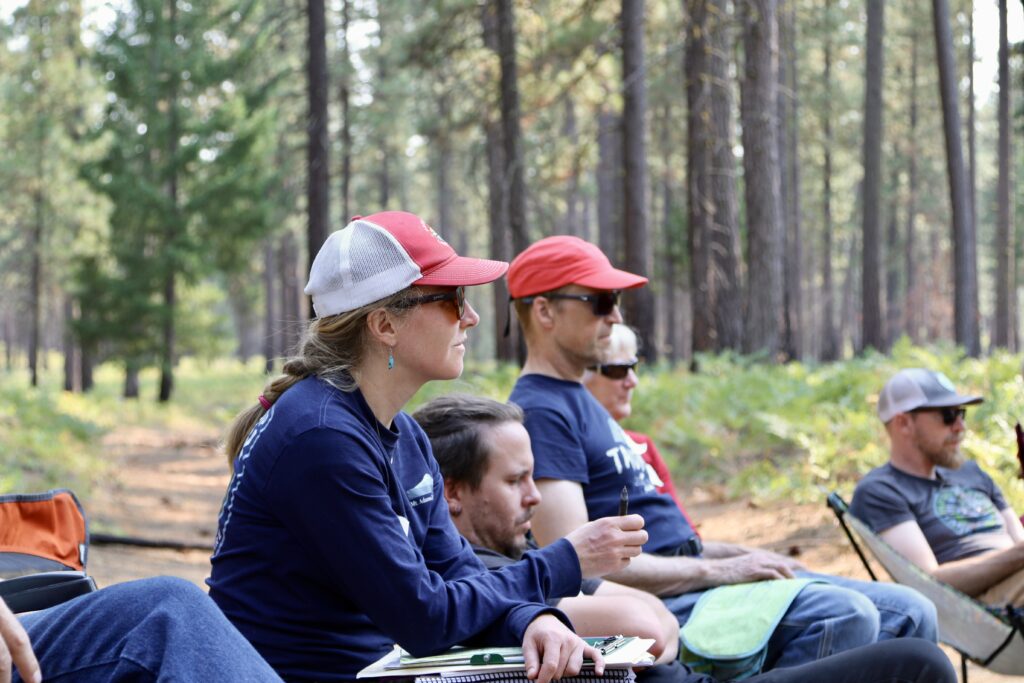
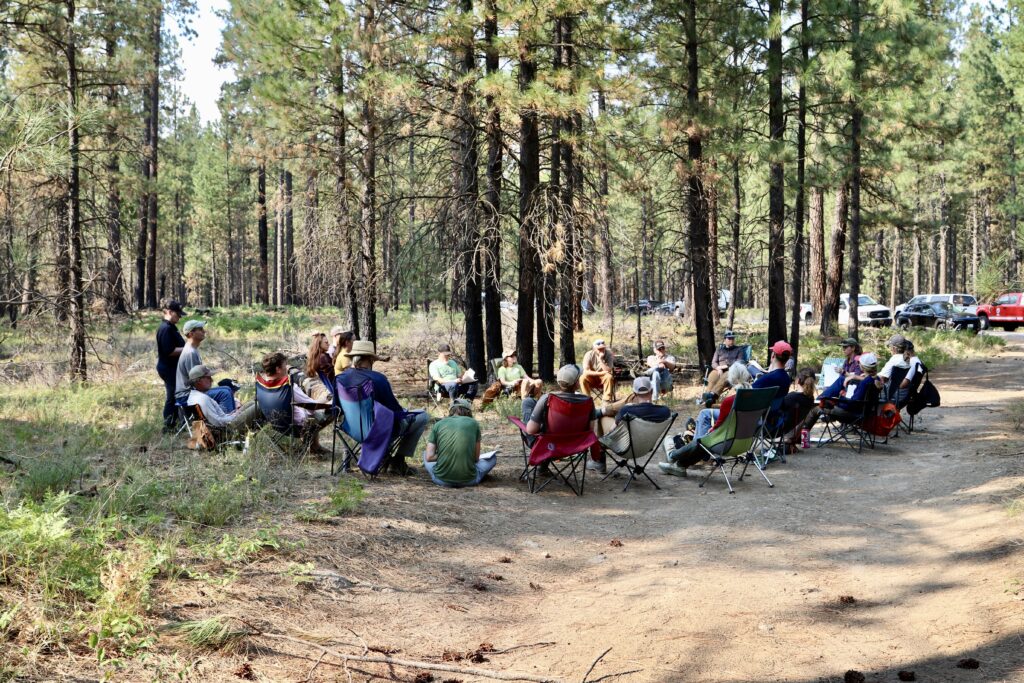
It was fitting to wrap up day two in the Pine Flats tract of Mt. Adams Community Forest, which has become a living classroom for prescribed fire practitioners in Klickitat County, an active example of the continued growth of support for good fire in the Northwest. Photo: Amelia Wells, WRCD.
Lessons Learned:
- Follow the Stoke. Interest in prescribed fire exists within our region. Sometimes people see the value, they just don’t know how to start. Find the sparkplugs in your community, nurture that excitement, and create something together. People will show up. Bring others in but don’t waste too much time trying to convince those who cannot or will not be convinced.
- Don’t reinvent the wheel. There is so much expertise and knowledge to be found within our networks. Lean on those who have come before you and utilize what is proven to be successful.
- Start Burning! You’re not going to solve every problem or do everything perfectly the first time around, just start and see where it goes. Oftentimes, a small burn will suffice to radically shift a community’s perspective.
- It’s Not All About Acres. PBAs are about burning, but an almost equal part is creating community and changing culture. Focusing too intensely on racking up burned acres will draw much needed time away from developing the relationships that are vital for a PBA to be sustainable in the long run.
- One Size Does Not Fit All. There are so many different ways to structure and organize a PBA. Each will be unique to the place and people they serve.
- We’re Stronger Together. Developing a dedicated membership base is key in case of leadership turn over: you shouldn’t rely on one person. For a PBA to be sustainable over time, it must find its longevity in its participating landowners and members.
Learn More:
- wapba.org: home to everything PBA in Washington State
- Oregon PBA Information
- Colorado Pile Burn Cooperatives
- Further reading:
- Sharing Lessons and Knowledge at the Prescribed Burning Association Learning Exchange (Fire Networks Blog, by Kara Karbowski)
- Community-led Burning: Building Capacity for Prescribed Fire (WAFAC)
- Community-Led Burning: Building a Grassroots Culture of Prescribed Fire (WAFAC)
